Carrier Management reached out to leaders of property/casualty insurance companies and service providers, asking them to respond to questions about innovation.
Here we present a dozen responses to our second question about innovators making an impact:
Q3: In your view, what innovation or innovator outside the insurance industry has had or is having the greatest impact on the P/C insurance industry?
- Q1: The greatest innovation in the P/C insurance industry
- Q2: Describe the greatest innovation at your company
- Q3: Innovation or innovator outside the insurance industry
- Q4: How your company encourages innovation
- Q5: The biggest obstacle to innovation within the insurance industry?
- Q6: The next innovation to impact the P/C insurance industry
- Q7: Your role in leading innovation.
- Q8: Best book you have read about innovation
- Q9: Describe a failed initiative at your company
- Q10: Collaborating with market competitors
- Q11: Can P/C insurers disrupt other industries?

Rios (American Modern): Geospatial technology has allowed us to know so much more about our customers to their benefit. For example, we know the location of a home in relation to the potential perils it faces. That helps insurers more readily assess variables such as distance to coasts, wildfire exposures and flood zone perils.
Rao (PwC): The two greatest innovations outside of the insurance industry that are having and will have a significant impact on the P/C insurance industry are (a) big data and analytics and (b) Internet of things.
Big data and analytics are revolutionizing how insurers are conducting their marketing, sales, distribution, underwriting, operations, claims, finance and risk management functions. Analytics are transforming how executives are making decisions—driven more by facts and data than gut feel. They are facilitating more effective and efficient decisions and actions at both the strategic and operational levels.

The Internet of Things is essentially digitizing the physical world. By enabling sensors to be embedded in key assets, the ways in which insurance companies can monitor and protect the assets they insure are being transformed.
Insurance has traditionally insured assets and paid claims when a natural or accidental event impacts the asset. The Internet of Things has turned this business model upside down by allowing real-time data to be collected from these sensor-embedded assets and thereby monitor these assets in real time. By building predictive models, insurers can now be more proactive in preventing disasters and reducing or even eliminating losses.
Both these innovations will fundamentally transform insurance over the next decade to be more proactive and focused on risk management and loss management as opposed to being underwriting and claims management focused.
Kelley (Ironshore): The arrival of alternative capital is having significant impact in the reinsurance marketplace. Voracious appetite for the issuance of alternative capital will reach record levels, likely to be in excess of well over $22 billion in 2014. Continual influx of new capital from unconventional reinsurance entities has intensified competition for traditional reinsurance, pressured market pricing and reduced opportunity for profitability. Increased capacity through innovative investment strategies is altering reinsurance market dynamics as new, nontraditional entrants seek to diversify their portfolios in search of favorable returns.
Lightfoot (Guy Carpenter): I see the most influential innovations from outside the insurance industry as the increase in computing power and the decrease in the cost of storing data. Those two things, along with new sources of data, are driving innovation.
For example, we recently developed GC ForCas, a model for achieving a better understanding of potential losses from casualty catastrophes. We worked with a vendor that had access to best-in-class event-loss data, and they were able to categorize the loss data on a multidimensional, correlated basis to inform our model development efforts. (Editor’s Note: Guy Carpenter’s GC ForCas vendor partner is Advisen.)
Hendrick (XL Catlin): We can’t overlook the impact that telematics has had on our industry. While it has given rise to “usage based” insurance in the personal auto insurance industry, it’s also helped us manage commercial auto risks in many other ways, becoming an essential tool in monitoring driver behavior as well as theft and hijackings.
Galanski (Navigators): Without question, it is the Internet. Today the level of detail and accuracy of information that is readily available to consumers and businesses globally has changed the game. This spreading of knowledge places greater value on specialist underwriters who bring meaningful expertise to solving problems, rather than simply providing a product.
Watson (Argo): With the rise and popularity of the Internet of Things movement, we already are starting to see this trend of industry “outsiders,” like Google and IBM, making their way into the insurance space.
Again, it goes back to this notion of customer-driven interaction. While insurers may be experts in underwriting, claims and risk management, the customer preference piece is the key to survival in the new operating normal. Naturally, for insurers, this evolution will catalyze a boom of technological investments, strategic partnerships and other moves to integrate digital into their business and leverage it for their strategic advantage.
Wurzler (OneBeacon Technology): Smartphones come to mind immediately. These mobile hand-held computers put very powerful capabilities into the hands of everyday people and offer many potential uses in our industry, including internal workflows as well as customer service and self-service opportunities.
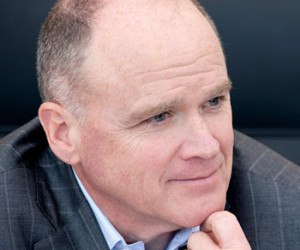
McGavick (XL Catlin): The smartphone has rightly earned the title as a disruptor of industries. For the commercial P/C industry, smartphone and tablet technology has changed how we communicate with each other and our clients and helped us streamline processes.
For instance, our risk engineers are using tablets to collect risk data on the industrial and commercial properties we insure, share it with our customers, and immediately pass it on to our underwriters to use in analyzing and pricing the risk. It was a process that previously took days, now hours.
And of course, because mobile technology is changing entire industries, it has an effect on our business as well. Things we used to insure in the form of bricks we now have to figure out a way to protect in the form of bytes. It’s a great challenge to the industry and will dramatically change the kind of insurance that makes up the bulk of how we remain relevant as a sector.
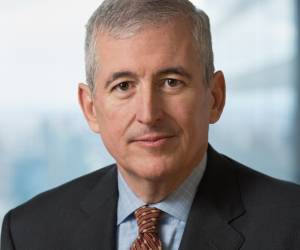
Colberg (Assurant): Apple’s iPhone has become ubiquitous and changed the way people access information, buy products and services, and communicate. It has had a dramatic effect on consumer expectations and how and where the insurance industry reaches its customers. From a customer experience perspective, Amazon is setting an extremely high bar, establishing digital experience standards without regard to industry and changing how businesses need to serve consumers. The biggest change, however, is yet to come as nontraditional players like Google enter the insurance arena. Their recent entry into auto insurance, offering comparison-shopping sites to consumers where they will be able to sell products directly, could eliminate the middle man in the process.
Ward (Hamilton): Google certainly has garnered a lot of attention recently for their driverless cars and their entrance into the industry itself. Given the amount of data their search model generates and the implications of driverless technology on the personal auto market, there have to be some very uncomfortable players in the marketplace.
Moreover, the Internet of Things will have a fundamental impact on our industry. Well-monitored and protected risks will continue to reduce pools of traditional premium by making premises safer.
Lupica (ACE): Over the past two decades, the innovations we’ve witnessed in the transportation industry have had the greatest impact on the P/C insurance industry: GPS, sensor technology, driverless cars.
But I don’t want to discount big data. It’s early days, but it’s already proving to be a game-changer. And, just a personal observation, new technology business models are intriguing, and the disruptions they’re creating within their own industry and ours, though unsettling, are exciting. Those businesses are challenging us as an industry.
Read more innovation responses:
- Q1: The greatest innovation in the P/C insurance industry
- Q2: Describe the greatest innovation at your company
- Q3: Innovation or innovator outside the insurance industry
- Q4: How your company encourages innovation
- Q5: The biggest obstacle to innovation within the insurance industry?
- Q6: The next innovation to impact the P/C insurance industry
- Q7: Your role in leading innovation.
- Q8: Best book you have read about innovation
- Q9: Describe a failed initiative at your company
- Q10: Collaborating with market competitors
- Q11: Can P/C insurers disrupt other industries?
Read more Innovation Insights by Person:
 Stanley A. Galanski, President and CEO, The Navigators Group, Inc.
Stanley A. Galanski, President and CEO, The Navigators Group, Inc. Mark E. Watson III, President and Chief Executive Officer, Argo Group International Holdings, Ltd.
Mark E. Watson III, President and Chief Executive Officer, Argo Group International Holdings, Ltd. Kevin H. Kelley, Chief Executive Officer, Ironshore Inc.
Kevin H. Kelley, Chief Executive Officer, Ironshore Inc. John Wurzler, President, OneBeacon Technology Insurance
John Wurzler, President, OneBeacon Technology Insurance Alan B. Colberg, President and Chief Executive Officer, Assurant, Inc.
Alan B. Colberg, President and Chief Executive Officer, Assurant, Inc. Manny Rios, President and CEO, American Modern Insurance Group
Manny Rios, President and CEO, American Modern Insurance Group Dave Pratt, General Manager, Usage-Based Insurance, Progressive
Dave Pratt, General Manager, Usage-Based Insurance, Progressive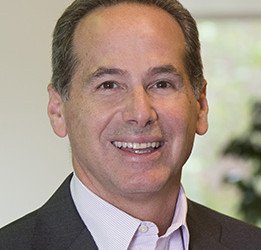 Berto Sciolla, EVP and Manager of North American Treaty Reinsurance,Gen Re
Berto Sciolla, EVP and Manager of North American Treaty Reinsurance,Gen Re Greg Hendrick, Chief Executive, Insurance, XL Catlin
Greg Hendrick, Chief Executive, Insurance, XL Catlin Anand Rao, Principal, PwC U.S. Advisory Practice
Anand Rao, Principal, PwC U.S. Advisory Practice Mike McGavick, Chief Executive Officer, XL Catlin
Mike McGavick, Chief Executive Officer, XL Catlin David M. Lightfoot, Managing Director, Head of GC Analytics – Americas, Guy Carpenter
David M. Lightfoot, Managing Director, Head of GC Analytics – Americas, Guy Carpenter Conan Ward, Chief Executive Officer, Hamilton USA
Conan Ward, Chief Executive Officer, Hamilton USA Ming Lee, Chief Executive Officer, AIR Worldwide
Ming Lee, Chief Executive Officer, AIR Worldwide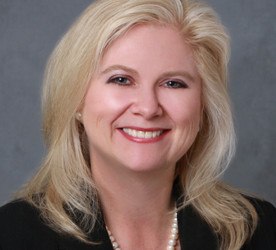 Laura Hay, National Insurance Sector Leader, KPMG LLP
Laura Hay, National Insurance Sector Leader, KPMG LLP John Lupica, Vice Chairman, ACE Group; Chairman, Insurance–North America
John Lupica, Vice Chairman, ACE Group; Chairman, Insurance–North America
Get all 16 interview neatly packaged in a single PDF download. Explore ideas by personality and by question. More than 60 pages of content.





















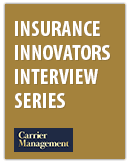
 Insurance Industry Contemplates Knock-On Effect of Tariffs to Claims, Consumers
Insurance Industry Contemplates Knock-On Effect of Tariffs to Claims, Consumers  $1 Trillion! 2024 P/C Industry Direct Premiums At Record Level
$1 Trillion! 2024 P/C Industry Direct Premiums At Record Level  How We’re Doing It: Boosting Corporate Culture and Customer Experience
How We’re Doing It: Boosting Corporate Culture and Customer Experience  USDA Opens 59% of Federal Forest for Logging to Manage Wildfire Risk
USDA Opens 59% of Federal Forest for Logging to Manage Wildfire Risk 



